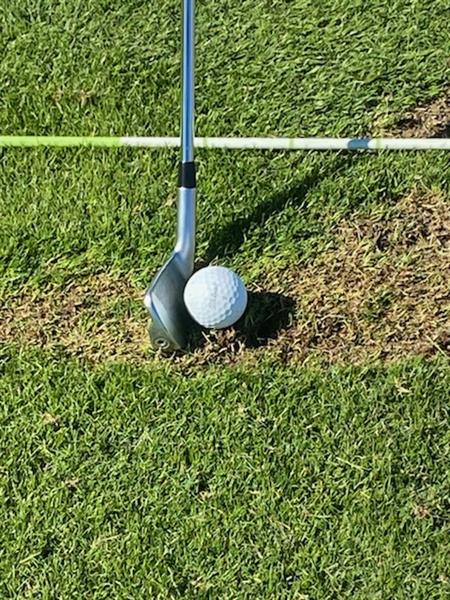Golf Tips for Avoiding Shanks
By Superstition Mountain Golf Instructor, PGA Golf Professional Dan Williams
Very few words scare a golfer more than the dreaded “S” word … with the possible exception of five-hour rounds! For some, it’s terrible etiquette to even say the word out loud. It’s an almost mythical thing that can seemingly happen out of nowhere and for no particular reason. But the truth is that the shanks are not some curse that requires a magic spell to overcome. The shanks are simply a bad shot that can happen because of a physical issue, mental issue or just because we all hit bad shots sometimes.
Before we try to “fix” anything, let’s make sure we know what a shank is and what it tells us. A shank occurs when the hosel of the club strikes the ball rather than the clubface. That’s it. It doesn’t mean you didn’t keep your head down or that you failed in any other swing technique necessarily. An error in your swing certainly occurred, but the shank itself doesn’t tell us anything about what specific error occurred. All we know is, you tried to hit the center of the face and missed. So, here are five common things I see when people are having issues with this shot and what you can do to correct them.
If you are standing too close to the ball, you will move the hosel of the club closer to the ball. Even if you set the clubface square to the ball at address, your swing might be naturally moving too far away from you, exposing the hosel to the ball. Although this isn’t always the issue, this is probably the easiest and most simple solution. Try standing further away from the ball at address.
If the club face is open at impact, which means it is pointed slightly away from you, you are bringing the hosel of your club closer to the ball which means you are at risk of a shank. If your solid shots tend to miss to the right or curve to the right (for a right-handed golfer), you probably have an open clubface. If this is you, check your grip. If the back of your lead hand is pointed toward the target, your grip might be “weak” which can cause the clubface to be open. If you turn your lead hand so your palm faces your body, this is called “strengthening” your grip which can help close the face without changing your swing.

If you have an outside-to-inside swing path, the hosel of the club is getting closer to the ball, which again, is putting you at risk of a shank. If your solid shots tend to pull left (for a right-handed golfer) or result in big slices, you probably have an outside swing path. Start by putting a headcover just outside the ball in a way that if your swing path gets outside the ball, you’ll hit the headcover before you hit the ball. This way you will have to adjust the path of your swing to a more neutral path or inside to out.
Now we get to the hard stuff…
Our brains are very powerful, and what we think about can change how our muscles work. Focusing on having a certain result, or not having a certain result, can distract us from our own technique and cause us to make errors. You may have hit a bunch of great shots already and you get to the last hole, and you really want to hit it close. Then, out of nowhere, you hit the hosel and the ball flies into the desert. I believe all golfers should have a simple and consistent pre-shot routine. This means you are doing basically the same thing before every full swing you make. For example, I look at my target from behind the ball, make two slow practice swings exaggerating my path, then aim the face, set my feet, grip the club, take one last look at the target and swing. You certainly don’t need to do that specific routine, but having a consistent routine will keep you focused on your process and this will help you avoid any outside distractions that could cause you to have an unexpected shank.
This one applies to poor impact in general, but a shank is certainly poor contact. A simple thought right before you swing is a great way to help your consistency. Having multiple swing thoughts per round or even per swing is a recipe for disaster. The more things you are trying to think about, the less likely you are to be able to execute. If you are trying to keep your head down and keep your lead arm straight and make a big shoulder turn and start your swing from the ground up and get forward shaft lean at impact and swing to a full finish … you are overthinking things and are unlikely to control your impact. If you are trying to make a big turn, keep your lead arm straight and lean the shaft at impact, you are still probably overthinking and are going to have a hard time with consistent impact. If you are thinking of one thing and that one thing is consistent for most of your swings you are on a much better path to consistent impact.

In conclusion, keeping things simple is almost always the best way to improve. The last thing you want to do is try a bunch of random ideas with no connection to why they will fix your problem. Keep it simple and keep the hosel away from the golf ball!
Interested in improving your game? Reach out to the golf instruction team at Superstition Mountain Golf and Country Club today.


